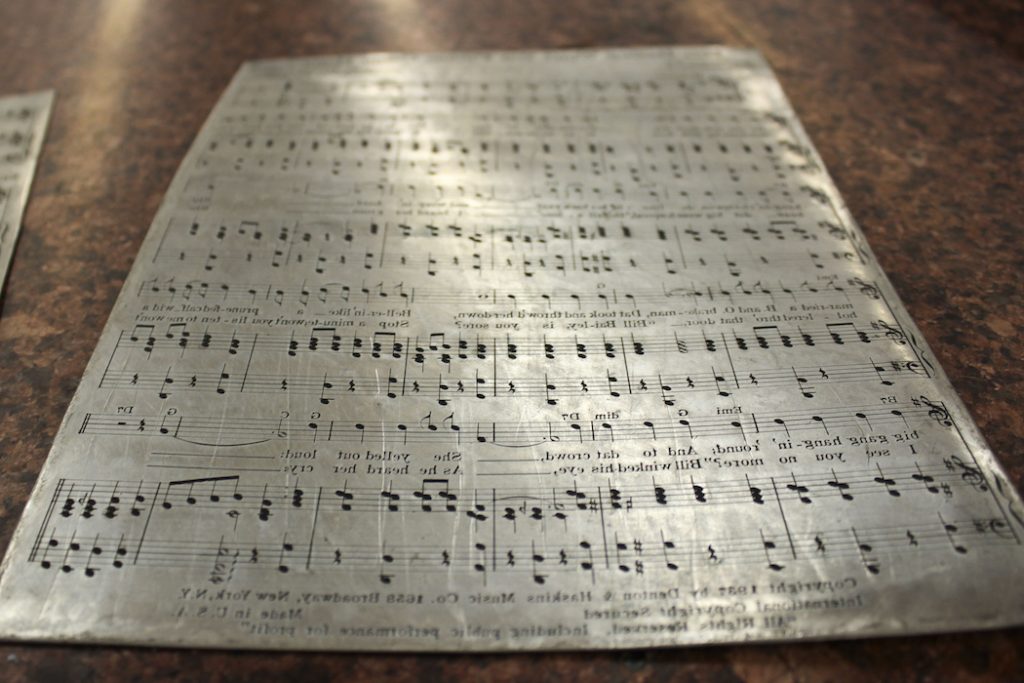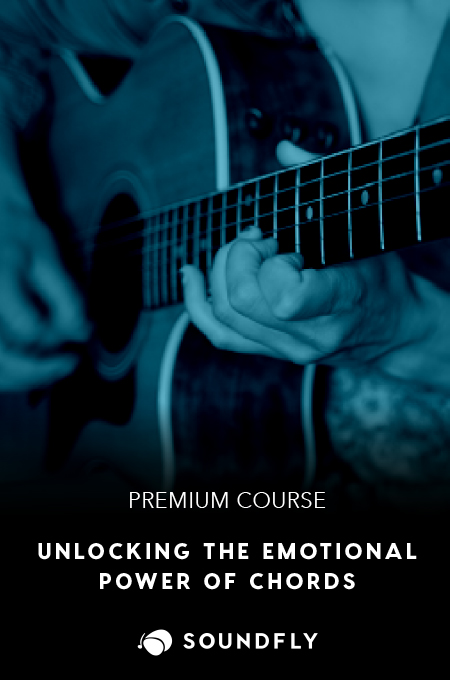
Whether you’re a composer or musician dabbling in writing arrangements, creating legible sheet music is an important and often overlooked skill. Some may never be required to learn how to read sheet music, while many others write the bare minimum, creating basic charts for their band and working out the details during rehearsal.
But when a professional score is needed, or when writing for a large orchestra, an engraver is employed to create the best score for musicians to read.
An engraver has a special set of skills that they use when making sheet music. At its most primitive level, engraving requires only a well-trained eye and hand, but as technology continues to infiltrate the music industry, many engravers have a great knowledge of the software, conventions, and even computer code involved in making an authoritative version of the composer’s music.
The Engraver Through History
People have been writing down their music as far back as 2,000 BC — primitive instructions for performance have been found on early cuneiform tablets in modern-day Iraq. Music is a particularly difficult art to write down, because the amount of convention and nuance involved in playing music can vary dramatically between cultures. Musicians in 9th century Greece, Rome, and parts of Europe established a number of standards in music notation, including some — such as Plainchart Notation — that are still used today.
However, it wasn’t until around the 15th century that music became both complex and universal enough to necessitate a set of practices in writing music that anyone could follow — where nearly any musician in the Western world could read the sheet music and produce an accurate performance.

Many, many rules have developed over time, but engravers are familiar with all of them. In recent history, most of the advances in music engraving center around the technology used to make the final score. In fact, “engravers” are referred to as such because one of the most popular ways to make sheet music was to etch every note into a metal plate, which was then used for printing many copies. As the tools evolved — from metal plates, to hand copying, to lithography, to Notasets, to musical typewriters, to computer software — so too did the ways in which music is written, and every music publisher has their own special set of rules to follow.
+ Learn more on Soundfly: Learn to write a work worth engraving. Pick up all the tools you’ll need to write for strings with our popular mentor-driven course, Orchestration for Strings!
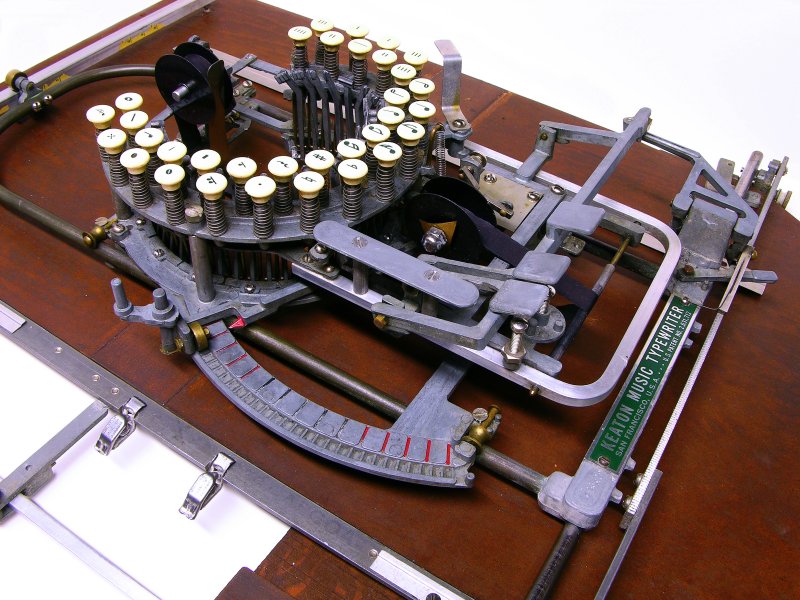
The Modern Engraver: A Marriage of Art and Technology
With the exception of a small few publishers, most current publishers use computer software to make their sheet music. G. Henle Verlag only just recently switched to software! The two big programs used are Sibelius and Finale, and like any competitors in software, both programs have their own way of solving the problems that arise when writing music. While musicians often swear by one program or the other, an engraver must be fluent in both programs in order to deliver scores to clients of varying needs.
Some engravers prefer to write their scores in music-specific markup code, using MusicXML or LilyPond, creating text versions of the scores which can then be rendered consistently across different computer programs. While one doesn’t need to be a programmer to engrave at a high level, it is very helpful to have experience using any platform musicians use. Engraving involves making many decisions when the composer was unsure or didn’t know just how to notate something, so any experience to help understand the composer’s perspective is worth its weight in gold.
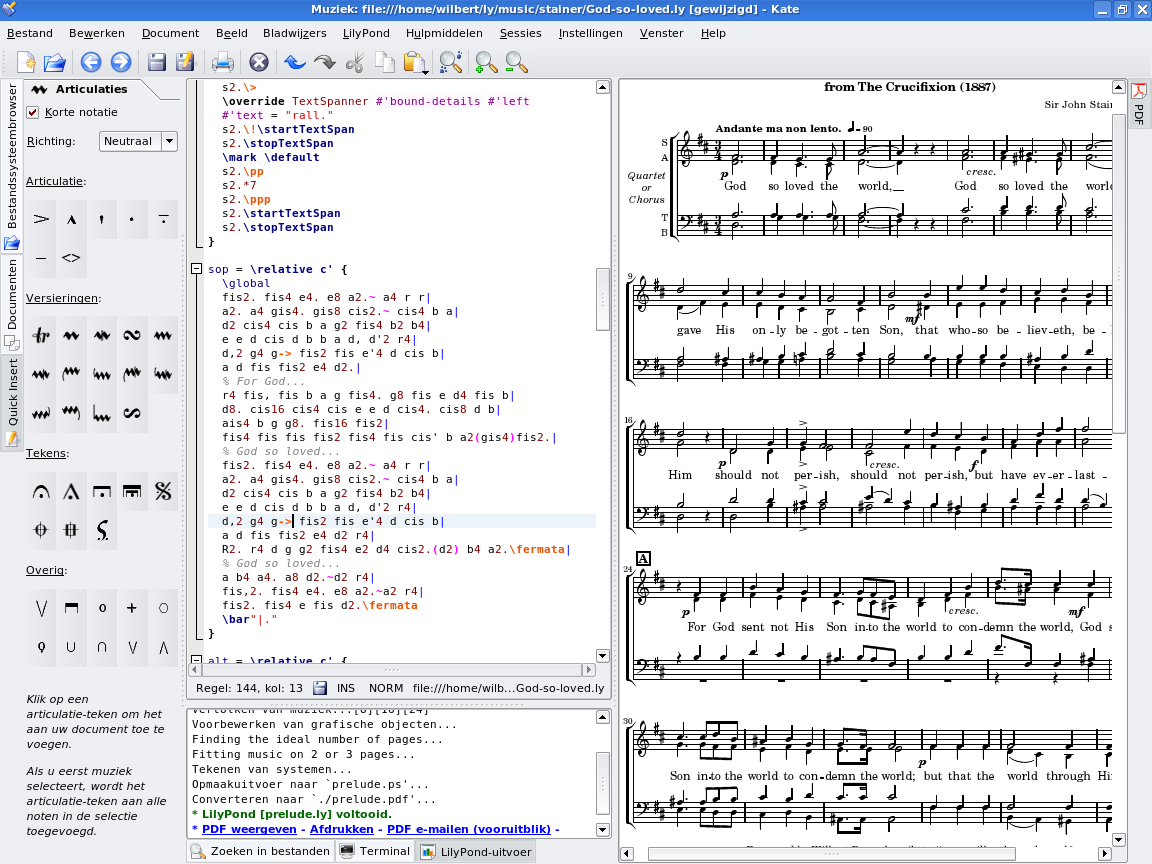
Most modern engravers operate as freelance artists, hired by individual composers who need quality sheet music. The composer sends the engraver a handwritten copy of the music, a Finale (.mus) or Sibelius (.sib) file, a recording, or hopefully all of the above, and the engraver must use these materials to create a professional score. While the composer may worry about harmony, melody, and arrangement, an engraver worries about line thickness, font usage, and score layout instead.
+ Learn more on Soundfly: Brush up on your music reading with our quick, free course How to Read Music.
Every major music publisher houses a number of engravers who are particularly adept at processing the huge amount of music that is released to schools, churches, and individual musicians each year. The workflow for a publishing house can vary greatly, but typically a composer sends a computer file that the engraver can edit and correct until the file conforms to the publisher’s standards. From there, it is translated into a printable file format and sent to the print house for publication.
How to Master the Art
One of the most exciting aspects of music engraving is the relatively low barrier to entry. While software can always be a large investment, the only skill truly required to be a great engraver is an ability to research. Practice is also very important, but when armed with the knowledge of the conventions involved in music notation, any musician can produce a nearly professional score using a basic understanding of their software.
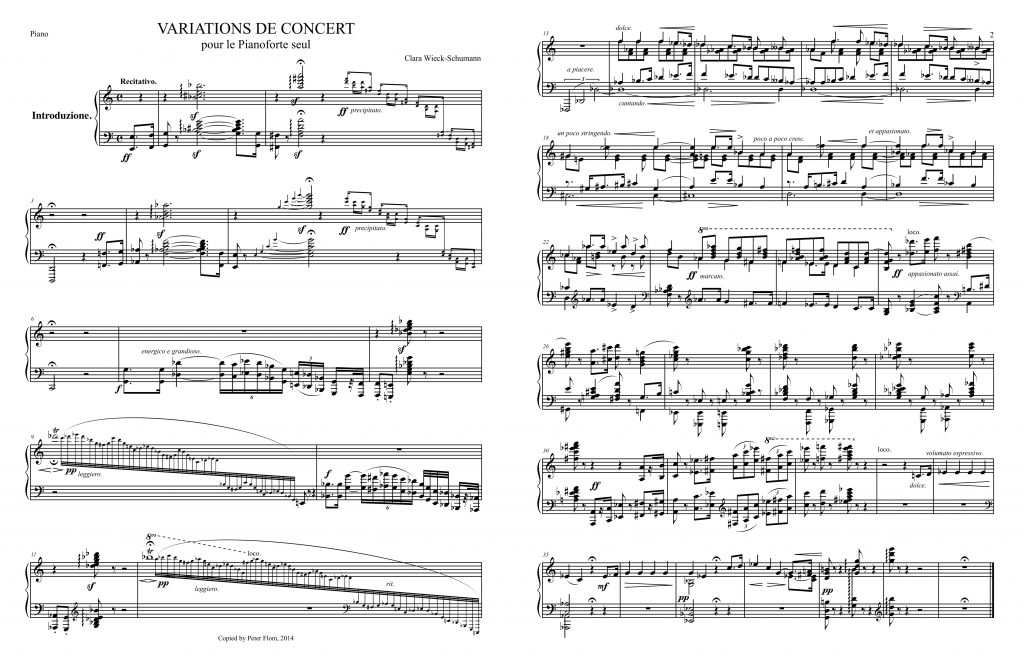
As you can imagine, this means that a heavy amount of reading. Fortunately, there are many great books on the topic, although some of them are sadly out of print. The books most commonly recommended as a starting point for engravers include Music Notation: A Manual of Modern Practice by Gardner Read, The Study of Orchestration by Samuel Adler, and Behind Bars: The Definitive Guide to Music Notation by Elaine Gould.
For the engraver who specializes in hand-writing music for jazz or musical theater (typically referred to as a “copyist”), the authoritative text on the subject is The Art of Music Copying by Clinton Roemer. I often recommend Mr. Roemer’s book to any musician looking for a digestible set of rules to follow when writing for their band, and I’d extend that recommendation to anyone reading this article. The book’s only downside is that it is now out of print, but there are a number of great modern books on the subject as well — most notably Mark McGrain’s Music Notation, a guide from Berklee Press. These books offer insight into the many specifics that go into making sheet music, and you’d be amazed how quickly the details add up.
For new engravers, it may seem necessary to buy a copy of Finale or Sibelius right away, but the masters can do their engraving by hand just as well. When the time comes to purchase software, use a trial version of both programs to decide which feels most comfortable to you. And before you put a single note on the page, read the manual to fully understand how to use your software efficiently. Both Finale and Sibelius offer excellent tutorials that walk you through creating music in their programs, and it is important to be well-informed so you can work quickly.
Music notation is a veritable art form, with many interesting facets to study and perfect through research and practice. It also is a skill that not many people care to learn, and most working musicians can set themselves apart by presenting a stellar score to publishers. And for the few dedicated musicians who find their passion in the details, music engraving can be rewarding, intellectually stimulating, and even very lucrative. Best of all, as the music recording industry struggles to find its footing in the next decade, there will always be a need for people who can write music down for others to play.
Our five-week course, Introduction to the Composer’s Craft, taught by composer Tim Hansen, is essential if you’re looking to learn the fundamental elements of composing for a group of instruments. You’ll explore the beat, time signatures, rhythm, tonality, timbre, texture, and structure, with key examples to demonstrate along the way, as well as weekly personalized feedback from an expert Mainstage Mentor.
